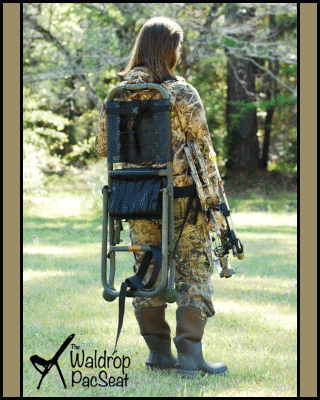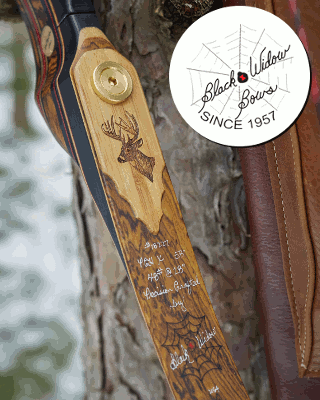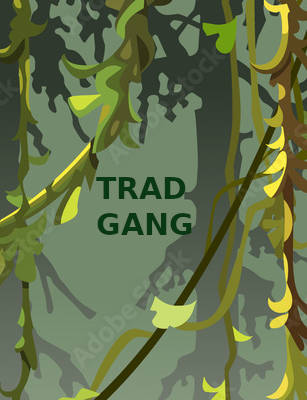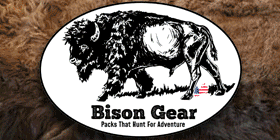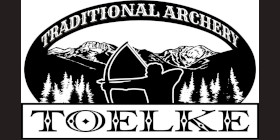In Pennsylvania, the Game Commission banded 246 turkeys this past winter. Spring gobbler hunters harvested 73 banded gobblers; 41 received $100 for reward-banded birds. Fifty bands were allocated to each of the state's six regions. In the three states participating in the study, $11,600 was paid in rewards by the NWTF this year.
"We are grateful that the NWTF, historically a major partner in Pennsylvania wild turkey management, is covering the cost for the Pennsylvania Cooperative Fish & Wildlife Research Unit at Penn State to coordinate the tri-state effort and analyze the data," said Executive Director Carl G. Roe. "Paying for this research, in addition to the rewards, is an expensive undertaking. Pennsylvania hunters and the Game Commission are indebted to NWTF and the Pennsylvania Chapter of NWTF for their generosity and continuing interest in our wild turkey resource."
Gobblers have a riveted leg band on one leg and a standard aluminum leg band on the other. Each band is imprinted with a unique letter-number combination, as well as a toll-free telephone number that is used to report the harvest or recovery of the banded bird.
Dr. Duane Diefenbach, who is heading up the study at the Pennsylvania Cooperative Fish & Wildlife Research Unit, said that the study will enable the team to estimate reporting rates by comparing the number of $100 reward bands reported to the number of non-reward bands reported. Reporting rate estimates help biologists determine harvests and may enable them to compare results from previous studies not using rewards.
"For many game species we have estimates of how many animals are harvested, but what we typically lack is knowing the harvest rate - the percentage of the population taken by hunters - because we lack population estimates," Diefenbach said. "This study, for the first time, will provide an estimate of harvest rates for turkey gobblers in Ohio, New York and Pennsylvania."
"In addition to estimating harvest rates of male turkeys during the spring season, the research also will enable the Game Commission to estimate annual survival rates of male turkeys and provide a better estimate of the statewide population."
Mary Jo Casalena, Game Commission wild turkey biologist, said that the multi-state approach provides a larger sample and, consequently, a better understanding of the variability in harvest rates.
"This study will allow comparisons of harvest and survival rates among the three states, with their varying harvests, hunter numbers and hunter densities," Casalena explained. "Age-specific harvest rate information will enable the state agencies to predict the effect of spring turkey seasons on the age-structure of the male turkey population. Recent research has found that harvest rates vary among age classes of wild turkeys and can greatly influence the number of adult gobblers in the spring harvest."
Bob Eriksen, NWTF regional biologist, said the Game Commission and NWTF are counting on hunters to help again this fall to ensure this important project continues to provide information about gobblers.
"The main goal of this work is to collect data on gobbler harvest rates during the spring season," Eriksen said. "Researchers also will be looking at overall survival of gobblers and distances moved by gobblers during the study. Game Commission and NWTF biologists are also studying band retention during this study. So, it is just as important for hunters to report banded gobblers harvested in the fall turkey season. There are still more than 170 banded gobblers in Pennsylvania, many of which have reward bands. If you are lucky enough to harvest a banded gobbler this fall, please make sure you call to report taking the bird."
"We're looking for people to report legbanded turkeys that are found dead either along the highways or in the woods. Those reports are just as important as reports from hunters who harvest a legbanded wild turkey."
Created in 1895 as an independent state agency, the Game Commission is responsible for conserving and managing all wild birds and mammals in the Commonwealth, establishing hunting seasons and bag limits, enforcing hunting and trapping laws, and managing habitat on the 1.4 million acres of State Game Lands it has purchased over the years with hunting and furtaking license dollars to safeguard wildlife habitat. The agency also conducts numerous wildlife conservation programs for schools, civic organizations and sportsmen's clubs.
The Game Commission does not receive any general state taxpayer dollars for its annual operating budget. The agency is funded by license sales revenues; the state's share of the federal Pittman-Robertson program, which is an excise tax collected through the sale of sporting arms and ammunition; and monies from the sale of oil, gas, coal, timber and minerals derived from State Game Lands.

